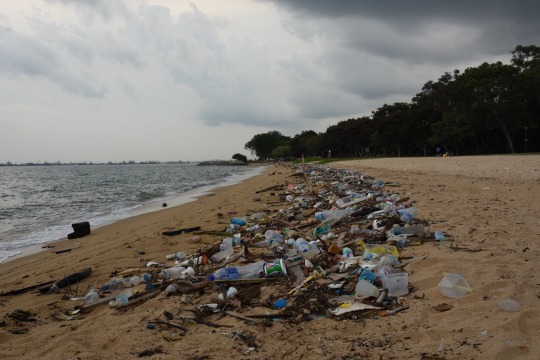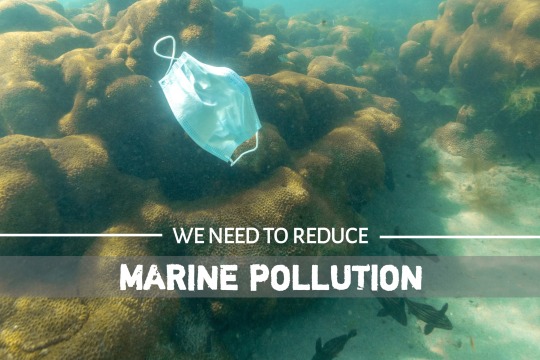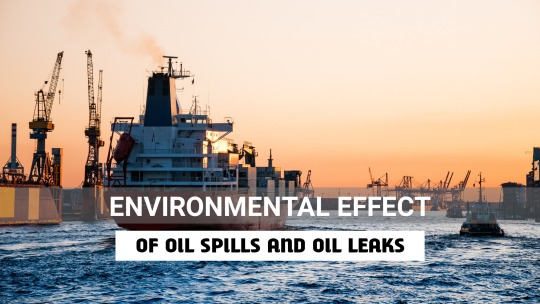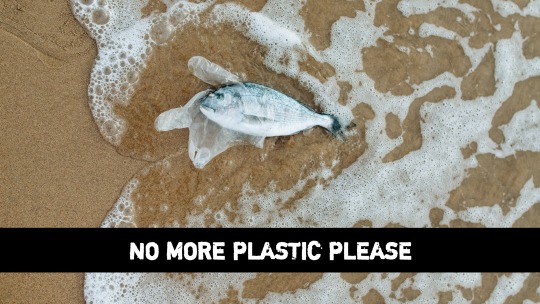#Marine Pollution
Text

COCAINE SHARKS: COCAINE FOUND IN SHARKS FOR THE FIRST TIME
Cocaine and benzoylecgonine, the main cocaine metabolite formed by the liver and excreted in the urine, have been detected in aquatic ecosystems several times, from rivers to coastal environments near human settlements. However, very limited information is available, and no reports concerning elasmobranchs have been found. A recent study found cocaine and benzoylecgonine in the brazilian sharpnose shark (Rhizoprionodon lalandii) from Brazil. This is the first cocaine is found in free-ranging sharks worldwide.
Researchers tested 13 sharks from the coast of Brazil, and 12 of them tested positive for cocaine, with high levels found in muscles. Additionally, females presented higher cocaine concentrations in muscle compared to males. It is not clear what the real effects of cocaine and benzoylecgonine are on animals; however, this study indicates that cocaine can negatively impact growth, maturation, and potentially reproduction of these animals. These findings highlight the potential impacts of the presence of illicit drugs in the environment.
Reference: Farias Araujo et al., 2024. “Cocaine Shark”: First report on cocaine and benzoylecgonine detection in sharks. Science of The Total Environment
Sharpnose shark by Enzo Muller
#Rhizoprionodon lalandii#Rhizoprionodon#shark#elasmobranch#science#brazil#atlantic#marine science#biology#marine biology#cocaine#drugs#environment#marine pollution
70 notes
·
View notes
Text

Ryan Stalker, “Ocean Drifter.”
Goose barnacles (Thoracica), Portland, Dorset, England,
British Wildlife Photographer of the Year 2024 and Winner of Coast & Marine category.
© the photographers and British Wildlife Photographer of the Year
#art#surreal#photography#ryan stalker#pollution#ocean#drifter#portland#dorset#england#goose barnacles#wildlife#marine#underwater#british wildlife photography#marine pollution#human footprint#trash#waste
64 notes
·
View notes
Text
While the discussion surrounding marine plastic pollution has largely focused on land-based sources, such as households and industry, a major and often overlooked contributor to ocean plastic waste is marine capture fisheries. Marine fisheries contribute to plastic pollution primarily through the abandoned, lost, or discarded fishing gear (ALDFG), such as nets, lines, ropes, and traps used to catch 2-3 trillion fish and other aquatic animals each year. Commercial industrial fishing is the primary source of ALDFG in the oceans.
‘Ghost gear’ can result from fishing gear getting entangled on reefs, rocks, and bottom obstructions, conflicts with vessels or other fishing gear, and bad weather. It may also be lost due to extended soak times (the time that equipment is submerged during fishing), fishing in deep habitats, or deploying excessive gear that cannot be hauled in regularly. If gear touches the seafloor or is not actively managed by fishermen, the likelihood of loss increases. Additionally, intentional discarding, including from illegal, unregulated and unreported (IUU) fishing, is also believed to contribute significantly to ghost gear in the sea, particularly in the areas beyond national jurisdiction. Vessels conducting IUU fishing often operate in adverse conditions, such as at night or without access to safe harbors during inclement weather, and frequently dispose of their gear to avoid detection, destroy evidence, and gain port access.
Overall, it is estimated that 5.7% of fishing nets, 8.6% of traps and pots, and 29% of fishing lines used globally are lost, abandoned, or otherwise discarded into the environment. All this ghost gear and other fisheries-related operations make up at least 10% of total ocean plastics. Rubbish associated with other marine operations adds at least an additional 10% to global marine litter. For plastics larger than 20 centimeters in size floating on the ocean’s surface, fishing gear accounts for as much as 70% (by weight).
7 notes
·
View notes
Text
Excerpt from this story from EcoWatch:
In a historic win for a group of small island nations — including the Bahamas, Antigua and Barbuda — the International Tribunal for the Law of the Sea (ITLOS) has found that human-produced greenhouse gas emissions absorbed by the world’s oceans are considered marine pollution.
In its first ruling related to climate, the tribunal — a United Nations maritime law court — advised that countries are obligated to safeguard marine environments by doing more than is required by the 2015 Paris Agreement, reported Reuters. Many small island nations are threatened by rising sea levels due to global heating.
“As the legal guardian of the Ocean Treaty, ITLOS has taken a critical first step in recognising that what small island nations have been fighting for at the COP negotiations for decades is already a part of international law,” said professor Payam Akhavan, the legal representative of the Commission of Small Island States on Climate Change and International Law (COSIS), as Euronews Green reported. “The major polluters must prevent catastrophic harm to small island nations, and if they fail to do so, they must compensate for loss and damage.”
COSIS — a group of nine small island nations in the Caribbean and Pacific Ocean that are threatened by sea-level rise — requested the opinion of ITLOS.
Though the decision is an “advisory opinion,” it should provide precedent for future cases.
“What happened today was that the law and science met together in this tribunal, and both won,” said Cheryl Bazard, European Union of the Bahamas ambassador, as reported by Reuters.
In its opinion, ITLOS said nations must monitor and reduce emissions and specified what their environmental impact assessments need to contain.
The court also said goals for reducing greenhouse gas emissions are required to be objectively set and based on relevant international standards and rules, as well as the best available science — a higher standard than the Paris Agreement.
“To those that would hide behind the weaknesses of international climate treaties, this opinion makes clear that compliance with the Paris Agreement alone is not enough,” said Nikki Reisch, Centre for International Environmental Law director, as Reuters reported.
#marine pollution#International Ocean Tribunal#climate change#marine ecology#International Tribunal for the Law of the Sea (ITLOS)
10 notes
·
View notes
Text

Plastic degradation by marine bacteria
“Plastic waste pollution on Singapore beach.” - via Wikimedia Commons
#this is what i’m studying for my undergraduate capstone so it’s very much on the brain for me rn#microbiology#plastic remediation#bioremediation#wikipedia#wikipedia pictures#nature#plastic pollution#pollution#environmentalism#environmental science#wikimedia commons#bacteriology#bacteria#marine bacteria#marine pollution#ocean pollution#ocean plastic#science#polyethylene#polypropylene#polyethylene terephthalate#pe#pp#pet#biofilm
15 notes
·
View notes
Text
#good news#environmentalism#marine biology#climate litigation#ocean life#ocean litigation#marine law#save our seas#protect our oceans#marine pollution#european#european union
8 notes
·
View notes
Text
youtube
German Scientists Discover Plastic-Eating Fungi
Scientists in Germany have discovered fungi that can eat plastic when there are no other carbon sources available. Out of 18 fungal strains tested, four were particularly effective at consuming plastics. These fungi showed a strong ability to degrade polyurethane, a type of plastic found in construction foam. However, they took longer to break down polyethene, which is used in plastic bags and packaging. The fungi struggled most with microplastics from tyres, mainly due to the presence of heavy metals and other additives. While these findings are promising, scientists caution that using fungi alone won't solve the global plastic problem, as their ability to degrade plastic depends on specific conditions like temperature and nutrient availability.
#Germany#Plastic Eating Fungy#German Science#Fungy#Plastic#Non Biodegradable#Global Warming#Enviromental Pollution#Marine Pollution#Youtube
2 notes
·
View notes
Text

'BEAUTIFUL BLUEFIN' 'SHREDDED ALBATROSS' 'THE MIGHTY KRILL' 'THE TORTURED TURTLE' 'THREATENED MANATEES'
Jacha Potgieter
This is a Conservationist/Artist who created an installation , 'Saving the Deep' in Chester Cathedral as an initiative to raise awareness. He created 12 sculptures for this installation, using plastics he found washed up on the beach at Criccieth.
Each sculpture portrays a story of plastic pollution and its effect on marine life . For example , 'Shredded Albatross' is an ode to plastic debris consequence on birds. These birds are attracted to the algae which grows on the particles floating on the sea surface, they ingest it and either choke or their stomachs become full and they starve.
I find that using the object of destruction - plastic- to make pieces of which it effects ,very powerful. I like the fact that he went and collected the plastics by beach combing , it was impactful in a positive way. He highlights the temporary use of plastics in relation to its long term existence and effect which is what I want to convey in my project.
The artist making art from plastic pollution | The Arts Society
11 notes
·
View notes
Text
#Defence Minister#Marine Pollution#Coast Guard#Indian coastline#Marine Pollution Management#Coastal states#Anti-pollution#Maritime Security
1 note
·
View note
Text
The Power of Beach Cleanups: Transforming Our Shorelines for a Sustainable Future
Beaches are more than just scenic spots for relaxation; they are vital ecosystems that support diverse marine life and provide numerous ecological benefits. However, the increasing pollution of our shorelines, primarily from plastic waste, threatens these ecosystems and the wildlife that depend on them. Beach cleanups have emerged as a powerful way to combat this pollution and protect our…
0 notes
Text
Press conference at the 4th session of the Intergovernmental Negotiating Committee on plastic pollution, including in the marine environment (INC-4).
INC-4 is taking place from 23-29 April 2024 at the Shaw Centre in Ottawa, Canada.
Watch the INC-4 on plastic pollution: Press Conference

#marine pollution#international instrument#pollution#plastic pollution#marine environement#marine debris#single use plastics#soft plastics#press conference#un environment
1 note
·
View note
Text

CHEMICAL RISKS IN SOFT BAITS
Soft plastic baits are commonly used artificial lures in recreational angling. These baits offer anglers the most realistic swimming actions and life-like colors. However, anglers regularly lose these baits while fishing, and there is little knowledge about the environmental impacts of lost soft plastic baits. New research has shown that, as expected, these baits release phthalates and endocrine disruptors into the environment.
Researchers analyzed 16 soft plastic baits and found that 10 of them contained water-soluble plastic additives, including phthalates such as dimethyl phthalate, diethyl phthalate, benzyl butyl phthalate, and di-n-butyl phthalate. In laboratory tests, these baits demonstrated endocrine-disrupting potential, likely due to additional additives not originally targeted. According to the researchers, soft baits represent a potential source of environmental pollution, may pose risks to human health, and require further investigation, especially considering their widespread use in recreational angling.
Reference (Open Access): Lewin et al., 2024. Soft plastic fishing lures as a potential source of chemical pollution-Chemical analyses, toxicological relevance, and anglers’ perspectives. Science of The Total Environment
34 notes
·
View notes
Text
#air pollution#arctic#beluga whale#blue whales#british columbia#candice gaukel andrews#climate change#drinking water#environment#marine life#marine pollution#microplastics#natural habitat adventures#nathab#nature#noise pollution#norway#ocean pollution#plastics#plastics pollution#polyester#science#science and environment#scientific research#svalbard#wild#wildlife#world wildlife fund#wwf
1 note
·
View note
Text
Nature's Cry for Healing: Overcoming the Limits of Emissions on Global Warming and Marine Pollution
In the delicate embrace of our planet, a crisis churns beneath the surface, unseen yet fiercely felt. Emissions, like wisps of unchecked industrial fervor and thoughtless human consumption, have reached a crescendo that surpasses the purification capacity of our beloved nature. The consequences echo through the very fabric of our existence, manifesting as global warming and marine pollution, two…

View On WordPress
0 notes
Text
Let the Fish Swim Freely, Don't Throw Garbage at Them.
Stop marine Pollution.

How does marine pollution Occur?
Since the ocean forms 71% of the earth’s surface, most of the pollutants in the atmosphere fall on it. In recent decades, however, there is in addition a huge amount of direct marine pollution caused by human activities.
Industrial discharges and agricultural run-off (about 70 trillion litres a year) containing pesticides, fertilizers, and various toxic chemicals find their way to the ocean. Treated and untreated human and other domestic waste. Treated and untreated human and other domestic waste (about 6 million tonnes a year) end up in the ocean with all their contaminants. In fact, sewage remains the largest source of contamination of the coastal and marine environment.
The oil industry contributes deadly pollution through leaks, spills, and cleaning of tankers.
Nitrogen input into the ocean has been rapidly increasing due to agricultural runoff, atmospheric deposition, and loss of natural interceptors like coastal wetlands, coral reefs, and mangroves.
The result is greater marine and coastal eutrophication. Blooms of toxic or otherwise undesirable phytoplankton are increasing in frequency, intensity, and geographic distribution. Such blooms or red tides greatly affect fisheries, aquaculture, and tourism.
Persistent Organic Pollutants (POPs), which spread through the atmosphere, are found everywhere in the ocean. POPs cause reproductive, immunological, and neurological problems in marine organisms and possibly in humans. Another concern is the increasing amounts of non-biodegradable waste like plastic articles and nets that float in the ocean. Large numbers of birds, turtles, and mammals are killed by entanglement in or ingestion of such waste.
Human activities have changed sediment flows into coasts and the ocean. Areas like deltas that need sediments do not get enough, whereas coral reefs are smothered by them.

Chemicals in oil kill many marine organisms and coral reefs. Other chemicals form a black layer on the surface that coat the feathers of birds and the fur of marine mammals. They die or drown unless rescued and treated. Heavier components sink to the bottom and kill organisms like crabs and mussels or make them unfit for human consumption. When the oil spill reaches the coast, it destroys fishing activities and tourism.

The 2014 UNEP Report on ‘Valuing Plastic’ include these findings:
Plastic is the most common type of marine litter, comprising up to 80% of total waste in marine litter surveys. Most comes from land-based sources, with marine-based activities such as shipping, cruise lines, and fishing accounting for the remainder.
10 to 20 million tonnes of plastic is finding its way into the world’s ocean each year, costing approximately US$ 13 billion per year in environmental damage to marine eco-systems. This includes financial losses incurred by fisheries and tourism as well as time spent cleaning up beaches.
Over two-thirds of plastic litter ends up on the seabed with half of the reminder washed up on beaches and the other half floating on or under the surface.
Levels of litter in the ocean are increasing in spite of efforts to control the problem.

Industry bodies, businesses, governments, civil society and international institutions are recognizing the magnitude of the issue and need to tackle it. Many of them have joined UNEP’s Global Partnership on Marine Litter (GPML) and the global plastic associations have signed a declaration to develop solutions to marine litter.
Large areas of the ocean are now littered with plastic debris. One such area is known as the Great Pacific Garbage Patch.
DID YOU KNOW?

How Bad is coastal pollution?

With the inexorable movement of the world’s population towards the coastal areas, the pollution of the ocean nearer the shores has reached alarming proportions. Thousands of tonnes of sewage and industrial effluents are directly discharged into the ocean in many parts of the world.
A few years ago, shrimp aquaculture was taken up on a large scale on the Indian coast. This industry requires fresh water as well as sea water and uses heavy doses of antibiotics. Within a short time, the effluents from the shrimp farms polluted large areas. The local soil and ground water were affected. Ultimately, diseases and court orders put a stop to coastal aquaculture, but the industry flourishes in inland areas.
It is no wonder that marine pollution finds its way into the fish that we catch. For example, three major shrimp species harvested off Mumbai’s coastal waters have tested positive for lead and cadmium. The fish catch itself is declining in these waters, probably due to marine pollution.
0 notes
Text
Masters Responsibility as per ISM
0 notes